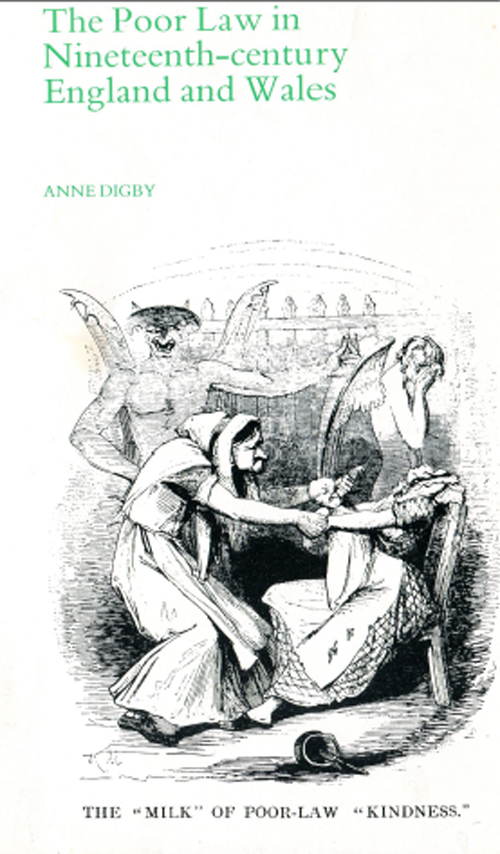The Poor Law in Nineteenth-century England and Wales
Classic Pamphlet

Poverty and Reform
Variety rather than uniformity characterised the administration of poor relief in England and Wales, and at no period was this more apparent than in the decades before the national reform of the poor law in 1834. Unprecedented economic and social changes produced severe problems for those responsible for social welfare, and different localities found distinctive solutions to them within the broad legal framework laid down by the Elizabethan Poor Law of 1597-1601. A social policy designed for a predominantly rural population of some four million people was likely to need some adaptation to meet the needs of a more urbanised population which increased dramatically in size from six to nine millions during the second half of the eighteenth century, and from nine to fourteen millions by 1834. The problems posed for relief administrators were least in the fast-growing towns of northern England where the expansion of iron or textile industries provided work for the growing numbers of inhabitants, and greatest for those in the countryside of southern England where economic changes exacerbated demographic pressures. During the Revolutionary and Napoleonic Wars, higher food prices encouraged farmers to raise production by enclosing land, and 2000 acts of enclosure were passed at this time. While enclosures increased the amount of employment available, it did not do so sufficiently to absorb all those in the expanded rural population. Also, the accompanying loss of common rights (such as the right to graze a cow or collect wood for fuel) caused some hardship to the poor. These difficulties were increased by the decline of cottage industries, particularly hand-spinning and weaving, which could not compete with the new factory-based production. Worse was to follow after the end of the wars, when a slump in the average price of wheat led to agrarian depression, with a consequent reduction in farm employment and a rise in the number of able-bodied applicants for poor relief. It was in southern England, where the rural labourer has little alternative to agricultural employment, that the dimensions of the poverty problem were most obvious...
This resource is FREE for Student HA Members.
Non HA Members can get instant access for £3.49

